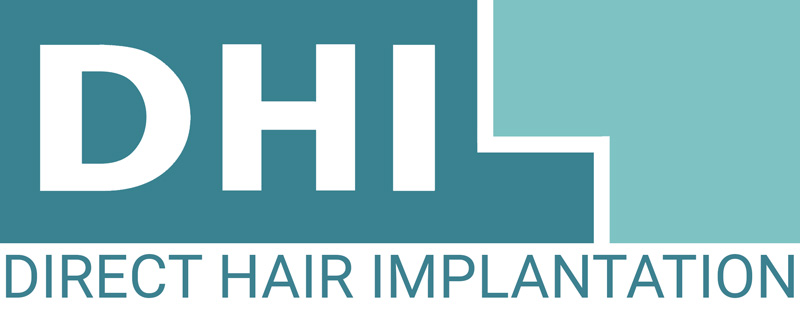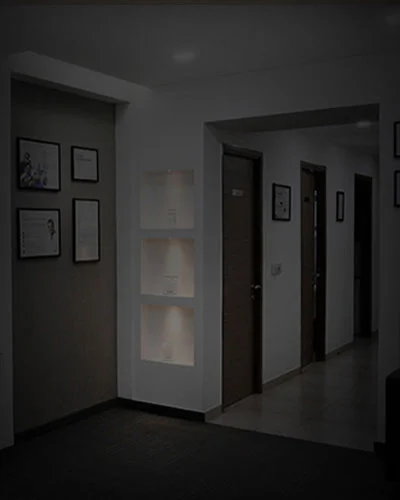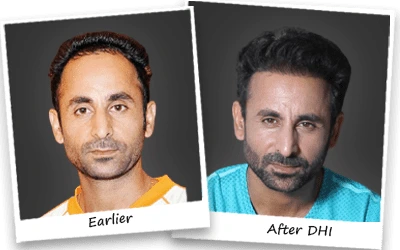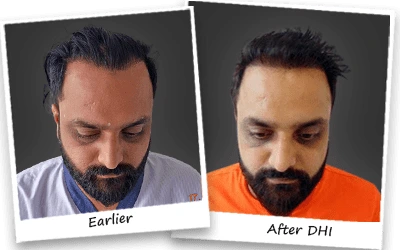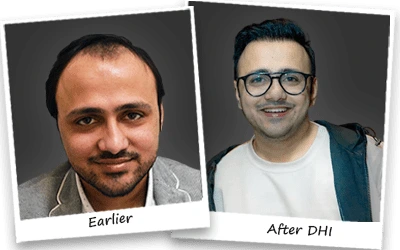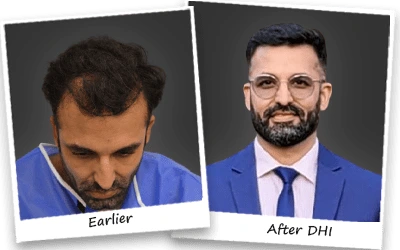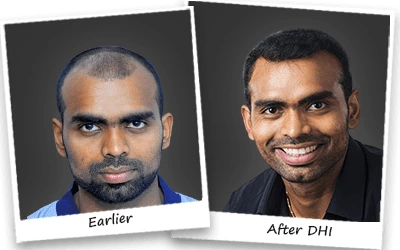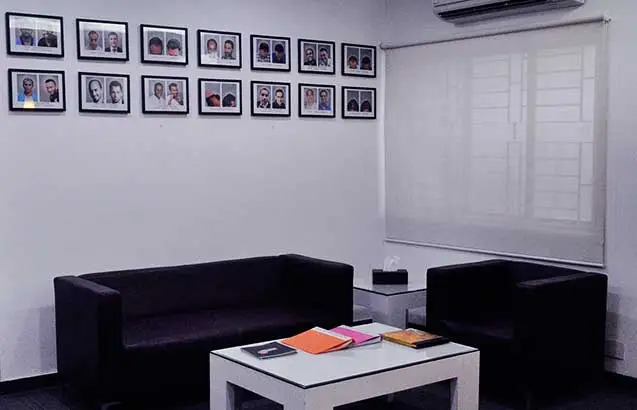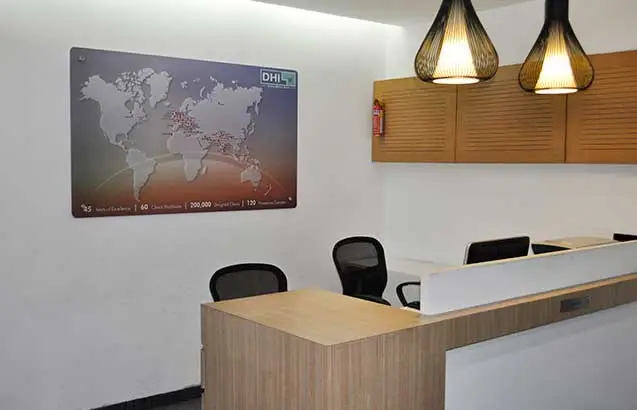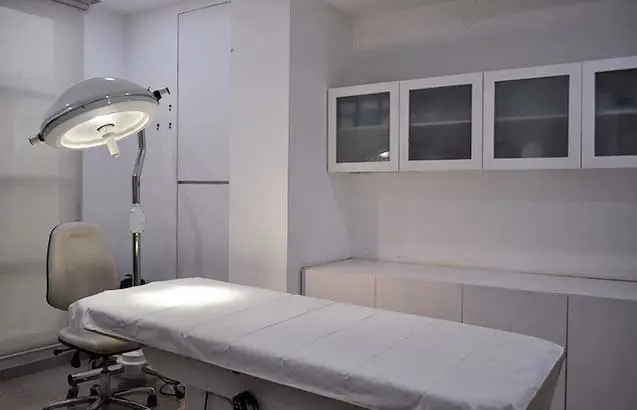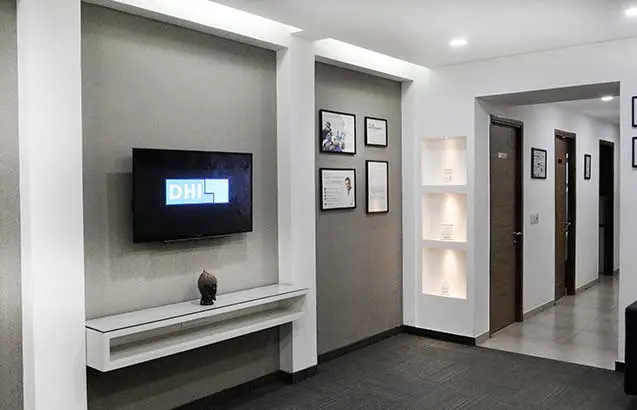Hair Loss Treatments in Chennai
Sometimes, getting a hair transplant treatment might not be the best option for your case. You
might have some prior medical history that might forbid you from getting new grafts. Or you
might just prefer a non-invasive technique.
In such a case, should you stop looking for a hair loss treatment altogether? Fortunately, you
still have a lot of options available.
The DHI clinic in Chennai offers many avenues to those looking for hair restoration treatments.
They have both surgical and non-surgical options that you can try out as per your requirements
and preferences.
However, individuals should note that they should have a consultation session with a qualified
doctor before deciding what kind of procedure or treatment they want to undergo. At DHI, our
treatment starts with a consultation as our medical experts always devise a personalised plan to
cater to the needs and demands of our clients.
Here are the alternative hair restoration treatments that you can try out at DHI Chennai:
1. Cosmetic Hair Patch: Direct Hair Fusion (DHF)
Direct Hair Implantation (DHI) has been serving as the pioneer for revolutionising the hair
restoration industry with various new techniques, tools, and methods. Earlier, getting hair
prosthetics or cosmetic hair patches were frowned upon because they were not reliable, looked
unnatural, and only served as a highly temporary measure.
However, with the introduction of Direct Hair Fusion (DHF), a technique developed and used
exclusively by DHI, hair prosthetics have become one of the most popular and viable treatment
plans for common hair loss conditions, especially for customers suffering from high-grade
alopecia.
It is a non-surgical treatment where an artificial, delicate, and skin-friendly membrane with
breathable pores is used to mimic the appearance and characteristics of natural hair attached to
the scalp. The hair replacement system that we use makes use of complete human virgin hair to
ensure that it matches the density, texture, length, and colour of the existing hair strands on
your head.
The procedure involves measuring the dimensions of the affected area, preparing a mold to cover
the area, and taking a small sample of the patient’s hair to ensure a complete match with the
new hair for optimal results.
2. Scalp Micropigmentation
Another hair restoration treatment that you can opt for instead of getting a transplant is Scalp
Micropigmentation (MPG).
It involves the use of highly specialised hypo-allergic medical pigments to the upper layer of
the scalp. These pigments are applied to your scalp to create a natural and full-looking
appearance. They are designed specifically to replicate the natural appearance of an
individual’s original hair follicles.
At DHI Chennai, all of our expert practitioners are trained to complete this procedure with
maximum efficiency and minimal complications. They assess and work with the patient’s natural
hairline and try different ranges of pigments to see which one is the most compatible with the
patient’s hairline.
MPG is a non-surgical treatment and is fit to treat all types of hair loss conditions. It is also
suitable for every individual, irrespective of age, gender, hair colour, and other similar
factors.
3. Scar Repair Treatments
Sometimes, the diagnosed issue might exhibit different conditions. At DHI, 35% of our hair
restoration procedures are performed on patients who have experienced faulty transplant
procedures at other clinics.
As we mentioned before, if the head of the surgery is not trained to perform these complicated
cosmetic procedures, the consequences could be dire. Without proper expertise, further
complications may arise. One of the most common issues that patients often face is abnormal
bouts of scarring on the treated site.
Scarring can prevent the growth of healthy hair in the affected regions. Moreover, some of the
scars induced by improper FUE and FUT techniques may also lead to irritation, burning
sensations, pain, and discomfort.
Ultimately, scarring is one of the most prominent issues in the hair restoration industry. In
almost all cases, such a condition is caused by the use of improper tools or techniques during
hair transplant procedures in clinics where the surgeons are not qualified or trained.
If you have had similar symptoms or experiences, you should consult a qualified doctor
immediately. The scarring may lead to further complications. A lack of diagnosis or treatment
might aggravate the problems and make things worse.
At DHI Chennai, our medical practitioners are trained to deal with post-operative complications
like scarring and can treat the condition with thorough care.
4. Growth Factor Concentrate Therapy Treatment
The Growth Factor Concentrate Therapy treatment is another alternative that you can try. It is a
highly safe and efficient hair restoration method that uses non-invasive methodologies to
provide optimal results.
It is a highly advanced, regenerative medical procedure that utilizes growth factors to promote
healing and stimulate tissue regeneration. While it is used in other medicinal fields like
dermatology, the most popular application of this technique is hair restoration.
At DHI, the entire procedure is carried out safely using non-invasive techniques. It involves the
collection of the patient’s blood for the preparation of a concentrated solution containing
growth factors.
The concentrate growth solution is then injected into the target site for treatment. In hair
restoration, Growth Factor Concentrate Therapy Treatment is effective for stimulating hair
growth, improving hair thickness, and revitalizing weakened or miniaturized hair follicles.
5. PRP Hair Treatment
Another popular alternative to traditional hair restoration treatments is the PRP hair treatment.
It is a non-surgical and non-invasive option that can treat many hair loss and hair fall
conditions.
However, it should be noted that PRP is only suitable if you want to treat or prevent the early
stages of hair loss.
The treatment involves the use of plasma, which is injected into the scalp where the targeted
area is to be treated. The objective of doing this is to stimulate hair follicles and encourage
healthy growth in affected areas. The PRP is activated with growth factors. This ensures that
inactive hair follicles or the ones that are newly implanted go into the active growth phase.
As such, it is only good for stimulating hair growth in areas where it might be inactive. It does
not offer a permanent solution to major hair loss conditions.
